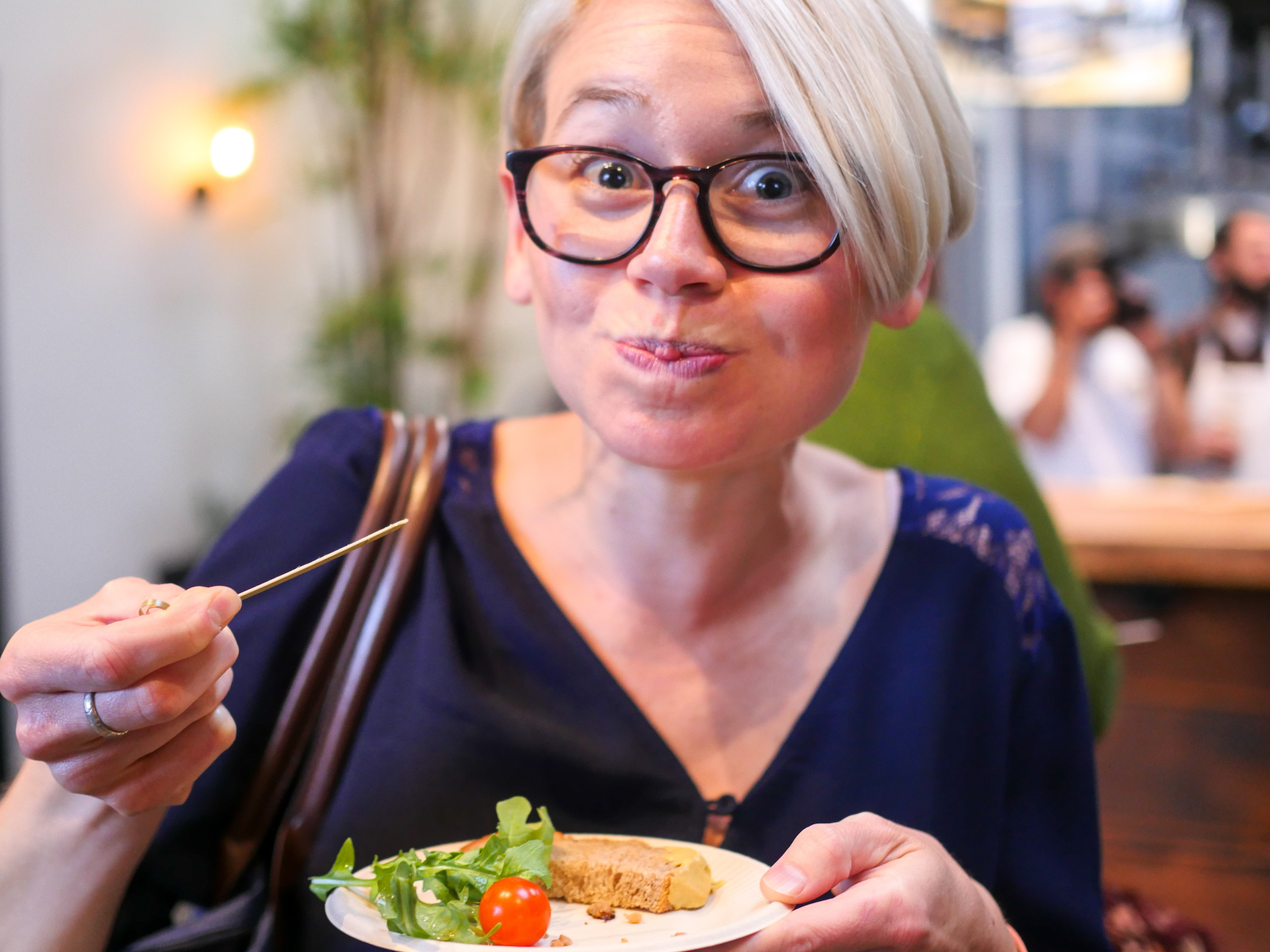- Silicon Valley clean meat startup New Age Meats made history on Monday by letting journalists taste the first cultured pork sausage made in a lab.
- New Age Meats’ sausage is the first cell-based meat to be made using both fat and muscle cells, which could prove key to nailing the flavor of traditional meat.
- Here’s what the farm-free sausage was like.
On a Monday night at a brewery in San Francisco’s hipster Mission District, the co-founders of a startup called New Age Meats helped cook up samples of pork sausage made entirely out of cells grown from a live pig named Jessie.
As scientists-turned-entrepreneurs Brian Spears and Andra Necula watched, the sausage they’d spent the past two months making at a nearby lab began to sizzle. Slowly, its sides turned brown and, as the aroma of breakfast meat filled the room, samples were doled out to taste.
New Age Meats aims to make meat from animal cells without killing any actual animals. They are one of roughly half a dozen nascent companies aiming to create an alternative to factory farming. In so doing, they hope to reduce waste, improve health, and eliminate animal suffering.
New Age Meats’ sausage was the first in history to be made with fat and muscle cells – an important combination that could prove key for nailing the taste of “cell-based” or “cultured” (meaning simply: not from slaughter) meat. Here’s what it was like.
Around 5 PM on Monday evening, a group of journalists and potential investors gathered at Standard Deviant Brewery for a taste of the first pork sausage made in a lab from the cells of a live pig.

After filling up on vegan appetizers and snacks, New Age Meats co-founder Brian Spears told us what to expect. He also shared a photo of Jessie, whose cells — taken from a small biopsy on her side — went into the meat we'd be eating.

Spears and co-founder Andra Necula teamed up with Matt Murphy, a butcher and sausage chef, to get their recipe just right. Because the sausage casing they used was vegan, it was extra delicate — meaning Murphy had to be careful to avoid too much blistering, which could cause the links to break apart in the pan.

After about five minutes of cooking, the sausage was done. As the room filled with the aroma of breakfast meat, Murphy nudged the links onto a serving plate.

Necula and Murphy sliced the sausage into bite-sized pieces. In addition to pork fat and muscle from Jessie, the links contained spices like sage, ginger, and white pepper as well as vegetable stock and soy protein.

When I got my hands on my sample of sausage, I was ecstatic. This was the first meat made from a lab instead of on a factory farm that I'd ever tasted. After spearing it with my toothpick, I went in for a bite.

The flavor was smoky and savory. The texture was distinctly sausage-like. It tasted like meat. Then again, it is meat.
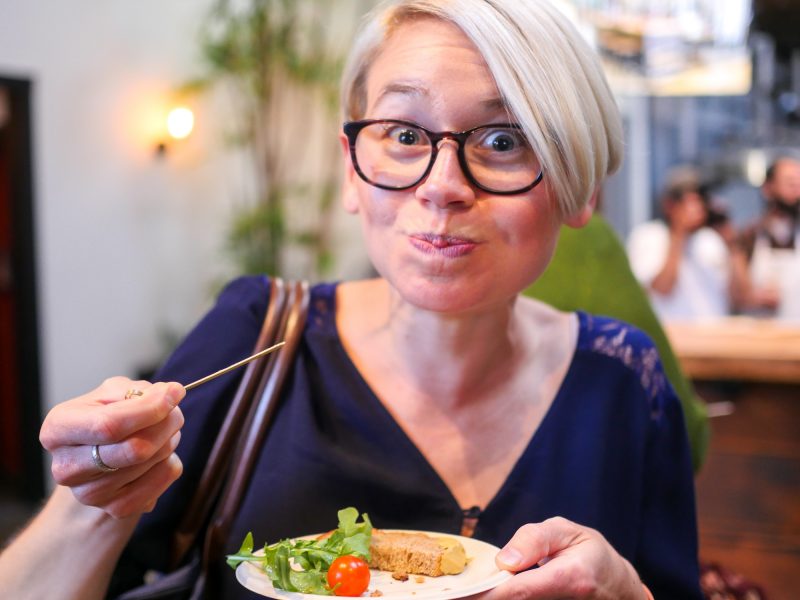
As we ate, Spears explained that all the material for the meat came from a single biopsy from Jessie. Spears and Necula coaxed the tiny cell sample into developing billions of fat and muscle cells in the lab, giving rise to the key ingredients in the sausage.
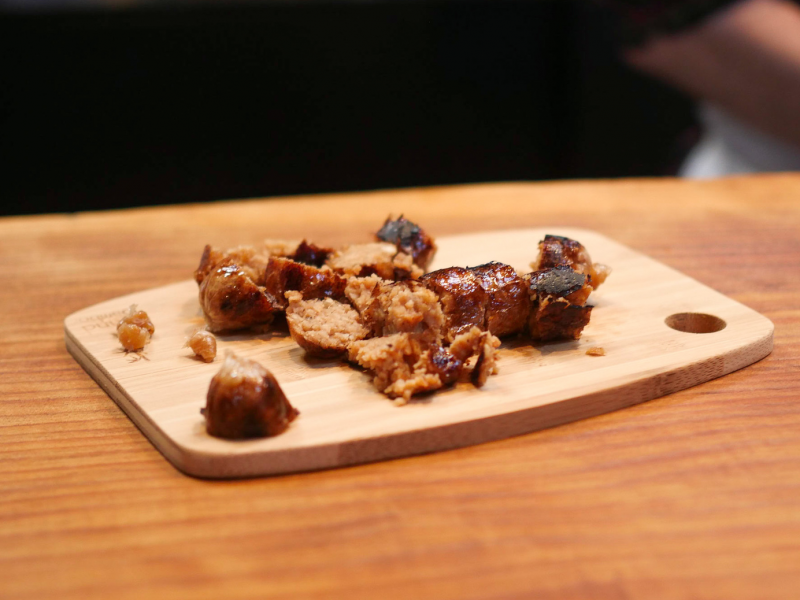
A chemical engineer by training, Spears said he chose to host the tasting at a brewery because these types of facilities — with their sleek silver brewer's vats — are the same kind of places where the meat of the future will be produced.
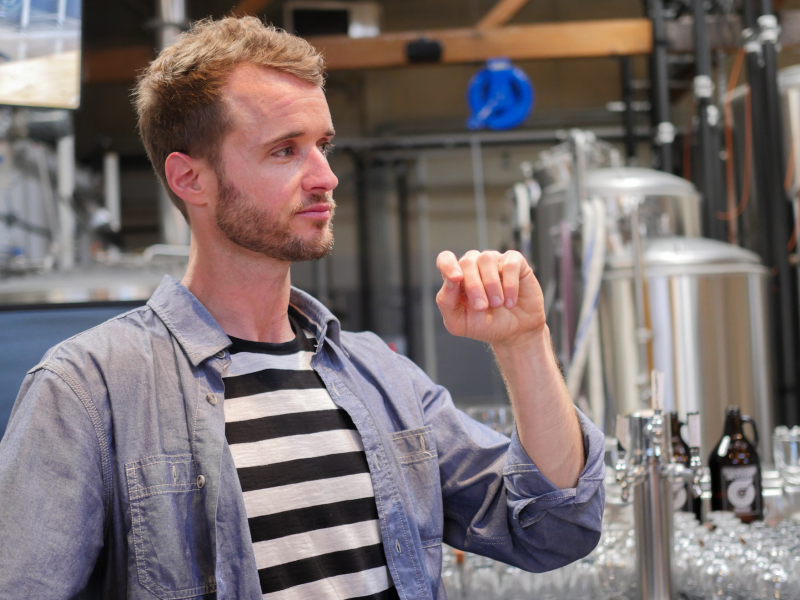
Until that day arrives, New Age Meats faces several obstacles in turning its prototype sausages into a product that could be sold in restaurants. Cost is the first.
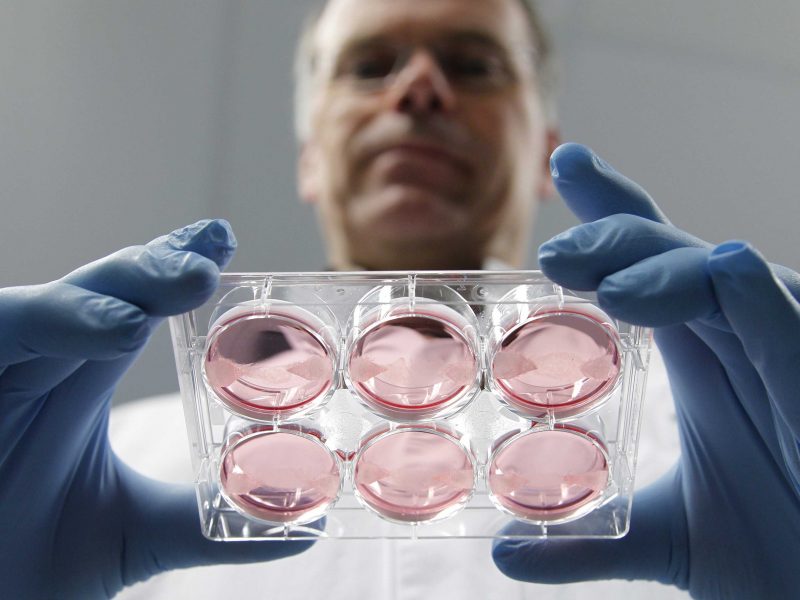
Getting to a price consumers would be willing to pay at a restaurant is still at least five to 10 years away, according to several CEOs of the leading cultured meat companies.

Another issue is texture. Making a sausage, patty, fish cake, or any other product that combines several ingredients with ground meat is nowhere near as difficult as mimicking the intricate texture and flavor of a steak or a chicken breast. "Wagyu beef" — with its complex marbling and texture — "would be the holy grail," said Spears.
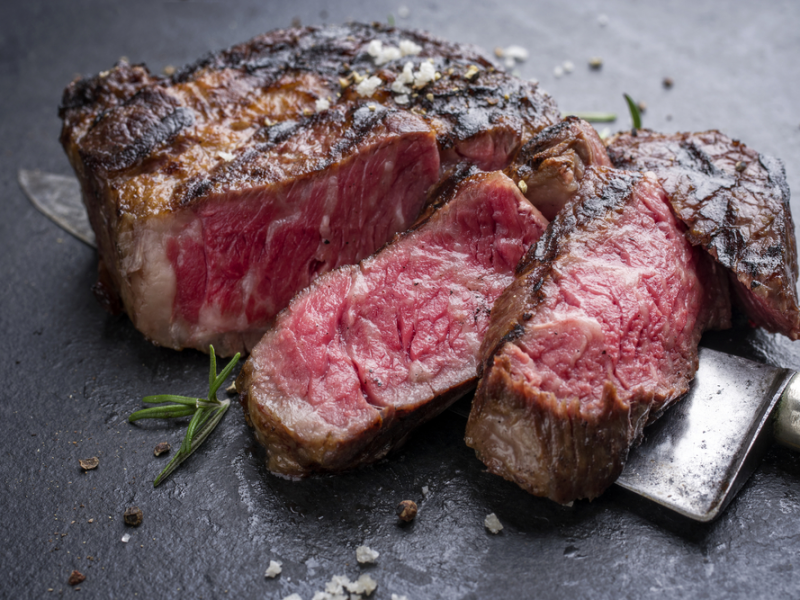
Necula said she and Spears planned to continue working on products in the sausage realm, but they're exploring options that include products made with beef and crab too. "We think we'll be ready to go to market in a couple years," Spears said.

